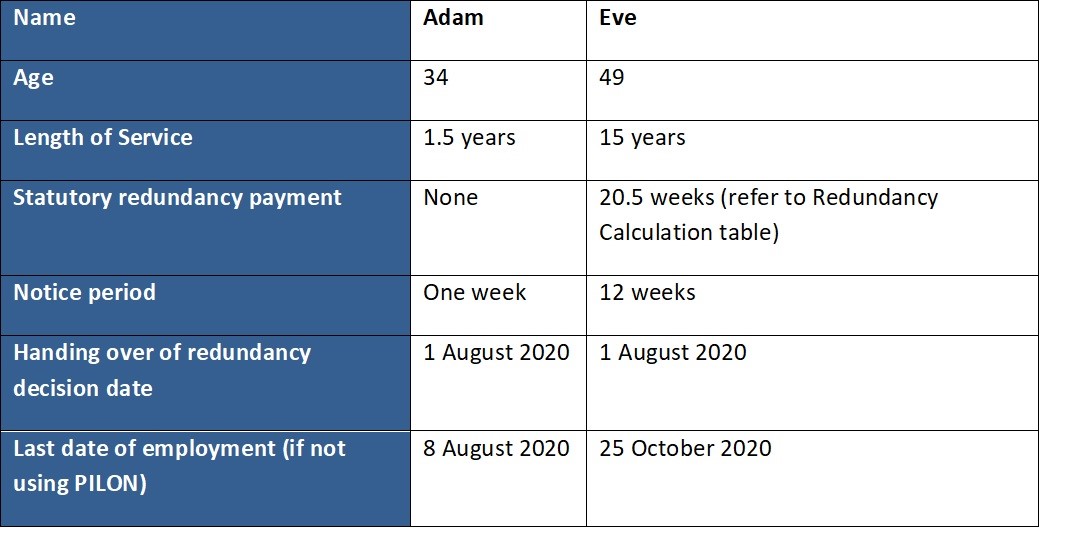Explained: If a Company Goes Bust Who Pays Redundancy in the UK?
Explained: If a Company Goes Bust Who Pays Redundancy in the UK?
Blog Article
Investigating the Interaction Between Company Redundancy and Organizational Adaptability for Future Development
In the dynamic landscape of today's business world, the intricate partnership in between business redundancy and organizational flexibility emerges as a crucial aspect for continual growth and success. Firms typically deal with the obstacle of striking a fragile equilibrium between preserving a degree of redundancy to reduce risks and promoting versatility to respond quickly to the ever-evolving market needs.
Importance of Company Redundancy
Business redundancy is an essential element that improves business durability and mitigates functional dangers. By including redundancy measures within the organizational framework, companies can much better withstand unexpected disturbances and fluctuations in the service setting. Redundancy functions as a tactical buffer, permitting companies to adapt and react efficiently to unforeseen obstacles without endangering important operations.
One trick facet of the relevance of business redundancy is its duty in making sure continuity during times of situation. When encountered with unexpected adjustments or emergency situations, repetitive systems, resources, or personnel can action in to maintain important functions and stop extensive disturbances. This connection not just safeguards the firm's credibility and customer trust however also decreases financial losses and operational downtime.

Approaches for Organizational Flexibility

Another essential approach is spending in technology and infrastructure that can support flexibility and scalability. Implementing electronic tools, automation, and data analytics can simplify procedures, enhance performance, and offer important understandings for educated decision-making. Additionally, creating adaptable organizational structures that permit quick changes to market characteristics and client needs is necessary for staying affordable in a rapidly advancing setting. By proactively identifying potential interruptions and possibilities, organizations can proactively adapt and prosper in an ever-changing organization landscape.
Harmonizing Redundancy and Adaptability
Attaining a harmonious stability between functional redundancy and organizational adaptability is extremely important in browsing the intricacies of a dynamic company setting. Striking the best balance in between redundancy and flexibility is a delicate procedure that needs a deep understanding of the web link company's goals, market characteristics, and danger tolerance.
To accomplish this equilibrium, firms need to conduct routine analyses of their operations to recognize locations where redundancy is needed for danger mitigation and where adaptability can drive technology and development. Executing versatile structures, promoting a culture of continual knowing and renovation, and motivating open communication across all levels of the organization are vital techniques to integrate redundancy and adaptability efficiently. By aligning these 2 crucial components, companies can place themselves for sustainable growth and success in an ever-changing service landscape.
Instance Studies on Adjustment Success
In analyzing instances of effective business adjustment, it becomes noticeable that the interplay between functional redundancy and adaptability is a defining factor in shaping durable companies. One compelling situation research is that of Netflix. Initially a DVD rental service, Netflix showed exceptional adaptability by transitioning right into a streaming platform when digitalization interfered with the industry. By purposefully buying modern technology and content production, Netflix not just prospered yet endured in a rapidly progressing market. Another standout instance is Amazon. Beginning as an on-line bookstore, Amazon constantly adjusted its business version, expanding right into varied industries such as cloud computing and artificial knowledge. This adaptability enabled Amazon to remain ahead of rivals and fulfill altering customer demands. Finally, Adobe gives a noteworthy illustration of effective adaptation. The business changed from marketing software licenses to a subscription-based version, making sure persisting earnings streams and boosted client interaction. These instance studies emphasize the importance of operational redundancy combined with business flexibility in promoting lasting development and competitiveness.
Building Resilience for Future Growth
Building durability for future growth requires a critical placement of functional processes with market dynamics and arising patterns. Business have to adjust to transforming settings by promoting a society of adaptability, technology, and continuous renovation. Strength includes not just recovering from problems but additionally proactively planning for future challenges. One key facet of building resilience is purchasing durable threat monitoring approaches to mitigate possible disturbances. This consists of situation planning, diversifying supply chains, and establishing backup strategies for various backups (who pays redundancy money).
Additionally, cultivating solid relationships with stakeholders, such as clients, staff members, suppliers, and the area, is essential for maintaining and weathering unpredictabilities trust fund and support throughout unstable times. Efficient communication and transparency play a crucial role in continue reading this structure durability, as they assist help with and line up expectations collaboration in navigating unpredictabilities.
Additionally, organizations require to prioritize learning and growth campaigns to upskill employees and outfit them with the necessary devices to adapt to altering situations. By investing in their labor force, firms can improve their adaptability and agility, inevitably reinforcing their durability for lasting future development.
Verdict

In the dynamic landscape of today's company globe, the complex connection between business redundancy and organizational versatility emerges as a critical factor for continual development and success. Business frequently face the obstacle of striking a delicate balance between keeping a level of redundancy to reduce dangers and fostering flexibility to respond quickly to the ever-evolving market demands.To accomplish this equilibrium, firms need to perform routine analyses of their operations to determine locations where redundancy is essential for threat mitigation and where adaptability can drive innovation and development.In conclusion, the interplay in between company redundancy and organizational versatility is crucial for future development. Structure strength with a mix of redundancy and adaptability will make sure that companies are prepared for the difficulties of the future.
Report this page